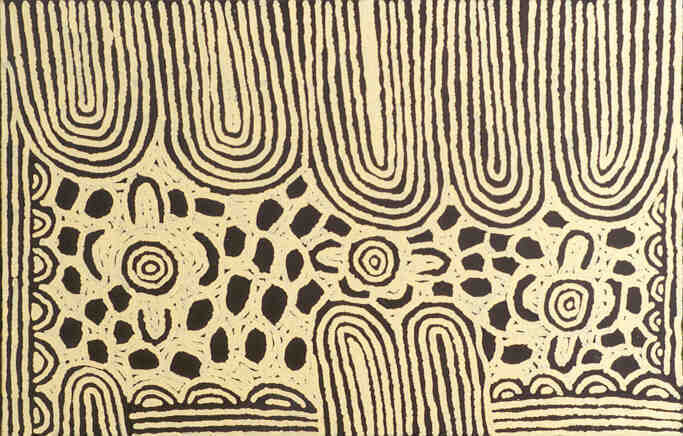Minyma Tingari, 2000 by Barbara Reid 82x125cm, 4662BR
In "Minyma Tingari (Women of the Tingari), 2000," Barbara Napangarti Reid masterfully captures the essence of the sacred Tingari Cycle, a spiritual blend of story, song, and ceremony. The painting, measuring 82x125cm, focuses on Tjukurla in the Gibson Desert, Western Australia, and narrates the journeys of Tingari ancestors who shaped the land through their rituals.
Barbara depicts the Tingari law women, represented by U shapes, dancing a ceremony for the pintalypa, a native bush-apple prolific in the western desert. The large arc shapes and lines on the exterior symbolize the body paint worn by Ngaanyatjarra women during Tingari ceremonies. These are crucial for maintaining cultural practices, forming a major part of the investiture teachings for post-initiatory youth, and providing explanations for contemporary customs.
The natural environment of Tjukurla features expansive sandhills, rockholes with water, and various bush foods. The concentric circles in the painting depict ceremonial sites, while the linear patterned U shapes represent windbreaks protecting the women from the harsh desert winds. The black ovals signify pintalypa, a small green fruit with poisonous black seeds, only the green exterior is edible. Stratified, elongated U shapes symbolize puli or rock formations, also reflected in the ceremonial body paint.
Barbara’s use of traditional symbols and desert colours, such as rich ochre brown and warm ochre yellow, in "Minyma Tingari (Women of the Tingari), 2000" beautifully captures the Tingari stories and their connection to the land. This painting is a vital cultural artifact, preserving and honoring the sacred narratives and traditions of the Ngaanyatjarra people.

